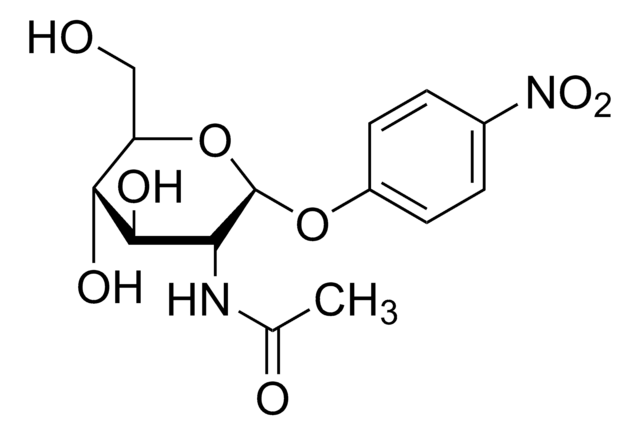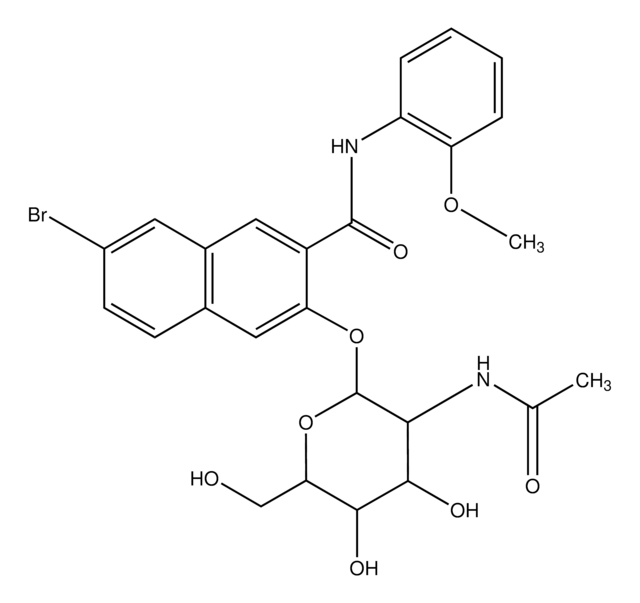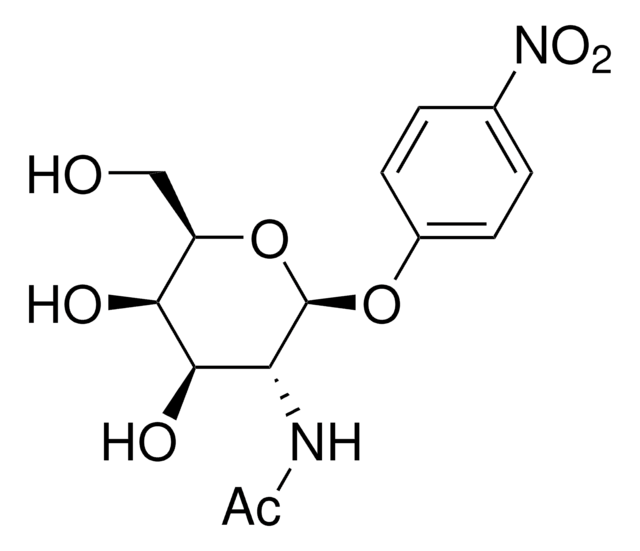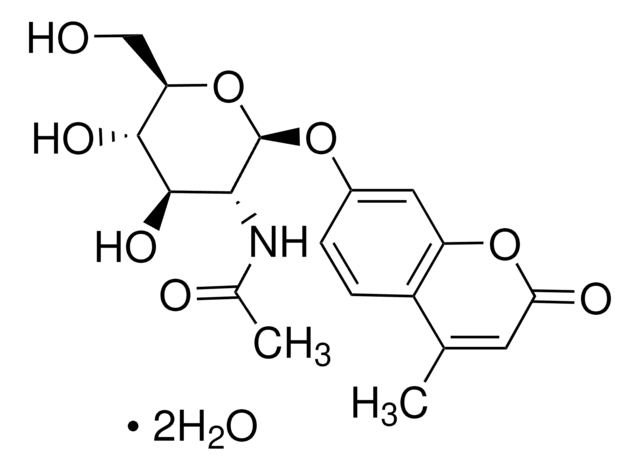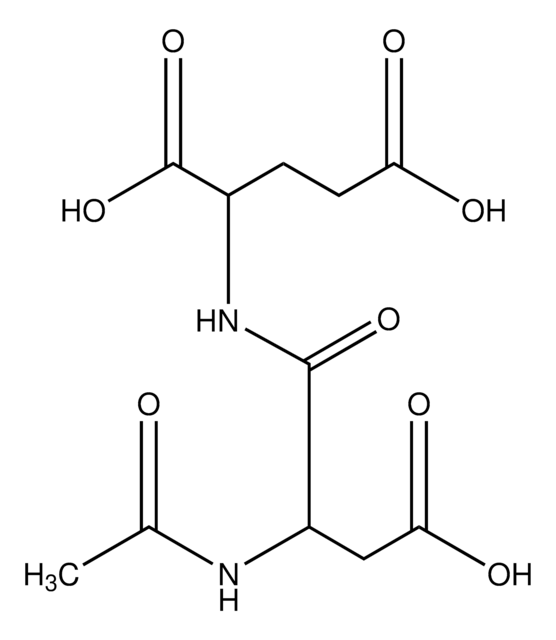10875406001
Roche
N-Acetyl-β-D-Glucosaminidase (NAG)
sufficient for ~50 tests
Synonyme(s) :
NAG
About This Item
Produits recommandés
Forme
solid
Niveau de qualité
Utilisation
sufficient for ~50 tests
Poids mol.
105.99 g/mol
Fabricant/nom de marque
Roche
Technique(s)
activity assay: suitable
Couleur
white to light yellow-brown
Solubilité
water: soluble ~210 g/L at 68 °F (Stop reagent)
soluble ~71 g/L at 32 °F (stop reagent)
water: soluble (Buffer substance, lyophilized substrate)
Adéquation
suitable for enzyme test
Application(s)
life science and biopharma
Température de stockage
room temp
Description générale
Application
Conditionnement
Notes préparatoires
- Buffer solution
Dissolve the contents of bottle 1 with 55 ml double-distilledwater. - Substrate solution
Dissolve the contents of bottle 2 with 55 ml solution I. - Stop reagent
Dissolve the contents of bottle 3 with 110 ml double-distilled water.
Storage conditions (working solution): Stability of solutions:
Solution II is stable for 1 month when stored at 2 to 8 °C, protected from light.
Solution III is stable for 1 month stored at 2 to 8 °C.
Stability of the sample:
The activity determination of the N-acetyl-β-D-glucosaminidase (NAG) should be carried out directly after collecting the sample. Turbid urines should be centrifuged and the supernatant decanted. NAG is stable for one week at 2 to 8 °C and for one month when stored at -15 to -25 °C.
Stockage et stabilité
Autres remarques
Composants de kit seuls
- Buffer Substance consisting of citric acid and potassium citrate
- Lyophilized Substrate consisting of sodium 3-cresolsulfonphthaleinyl-N-acetyl-β-D-glucosaminide and borax
- Stop Reagent consisting of sodium carbonate
Mention d'avertissement
Danger
Mentions de danger
Conseils de prudence
Classification des risques
Eye Irrit. 2 - Repr. 1B - STOT SE 3
Organes cibles
Respiratory system
Code de la classe de stockage
6.1C - Combustible acute toxic Cat.3 / toxic compounds or compounds which causing chronic effects
Classe de danger pour l'eau (WGK)
WGK 2
Point d'éclair (°F)
does not flash
Point d'éclair (°C)
does not flash
Certificats d'analyse (COA)
Recherchez un Certificats d'analyse (COA) en saisissant le numéro de lot du produit. Les numéros de lot figurent sur l'étiquette du produit après les mots "Lot" ou "Batch".
Déjà en possession de ce produit ?
Retrouvez la documentation relative aux produits que vous avez récemment achetés dans la Bibliothèque de documents.
Les clients ont également consulté
Notre équipe de scientifiques dispose d'une expérience dans tous les secteurs de la recherche, notamment en sciences de la vie, science des matériaux, synthèse chimique, chromatographie, analyse et dans de nombreux autres domaines..
Contacter notre Service technique



